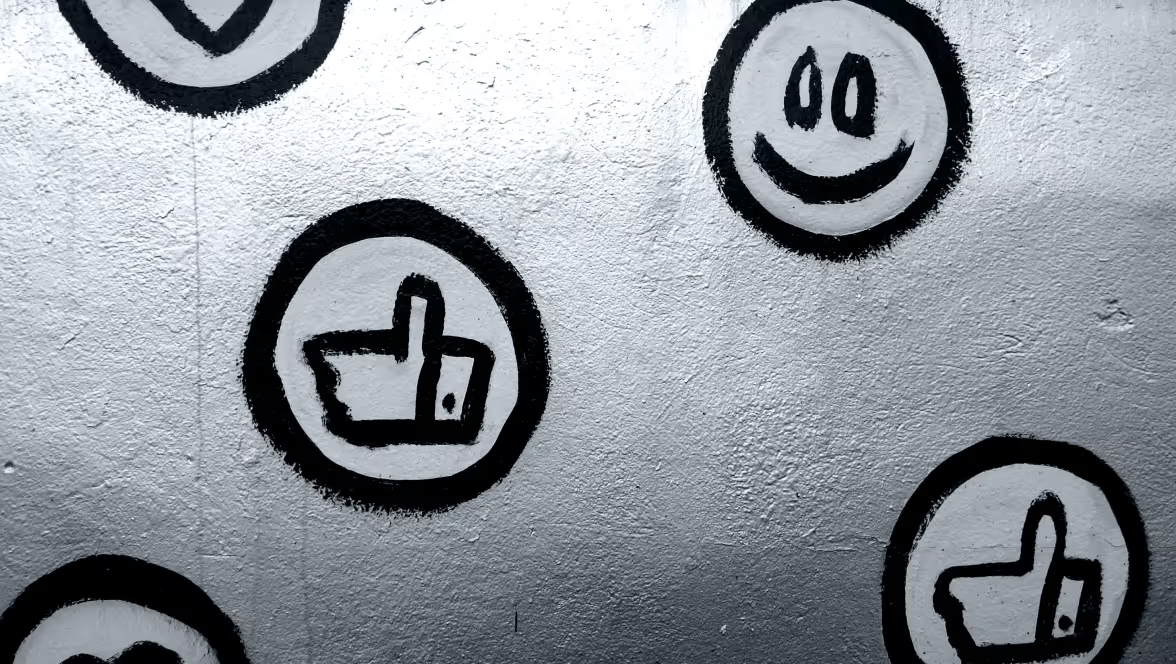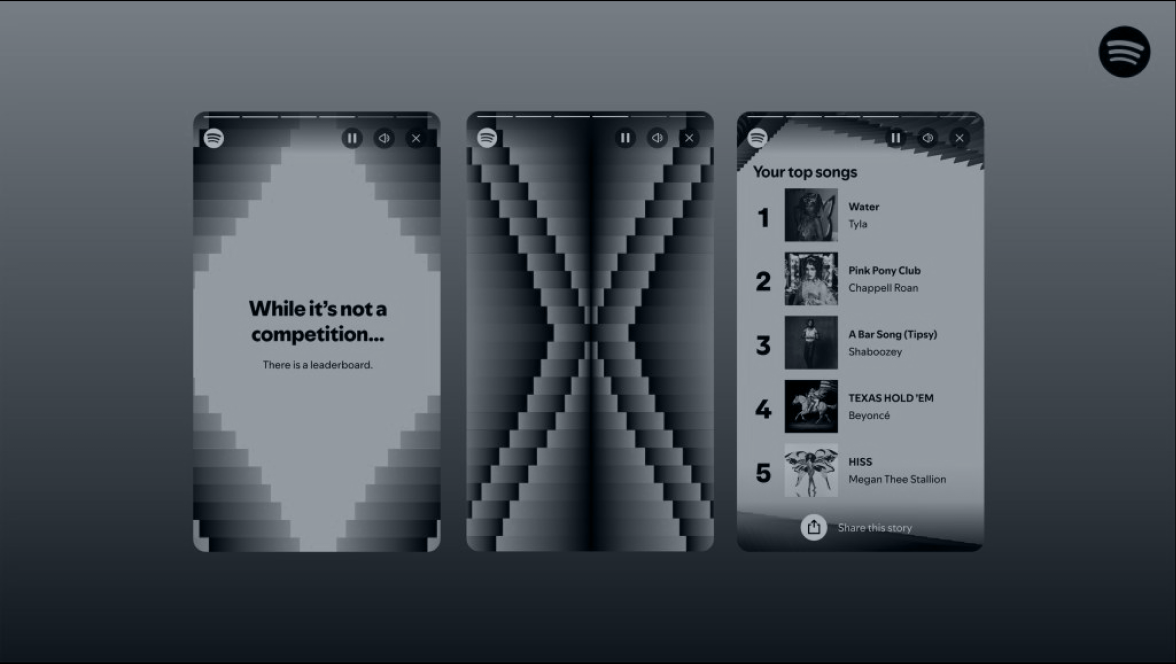
How To Build Your Music Career - without relying entirely on social media

If the (fleeting) US TikTok ban should teach us anything, it’s that we can’t rely on social media.
As much as it might feel like Instagram, Facebook, TikTok, X and all the other social media platforms that have sprung up in the last decade are a permanent fixture in our lives, they’re not.
At the end of the day, they’re run by private companies with vested interests in making money – and if something were to happen to that company or to their ability to make money with their social platform, there’s nothing compelling them to keep platforms live.
And, even if these platforms do stay live indefinitely, they’re changing ALL the time. The social media strategy that worked for your music career yesterday might not necessarily work as well today. Algorithms are fickle, ever-changing beasts that don’t really care about your music career…
But we do. So we’re here to show you that it is possible to build your career without entirely relying on social media to do so.
What’s the difference between owned and rented marketing platforms?
The core problem with relying entirely on social media to grow your music career is that you’re using rented online space. Unless you’re Zuckerberg, Mosseri, Musk or a handful of other gazillionaire corporate humans, you don’t own social media. You don’t even own your social media accounts.
You’re renting space on every social media platform you’re using. You have some control over your space (like what to post, what your username is, your profile picture, your bio, etc.), but you don’t have control over how your content is distributed to other users (the algorithm) or whether that space continues to exist in the future.
With owned channels, however, you do. You own the space, it’s yours to do what you want with, and it will exist for as long as you want it to (as long as you’re keeping up with subscription payments for any tools you’re using in that space, of course).
Owned channels are things like your website and email newsletter. While you may rely on a piece of technology to manage these spaces (like a website builder or email marketing platform), you still own the data (your website content or your email list) and can transfer that data elsewhere if your technology provider shuts down or changes or increases their prices.
The point is that you own the data that those tools are using. If the tool disappears, there are other tools you can use to do the same thing. If Instagram disappeared, so too would all your content, your followers, your way of communicating with your fans – but with owned channels like your website and email list, you’re not entirely reliant on a single tool or platform or piece of software to be able to communicate with your fans.
Promoting your music on owned marketing channels
A big reason why many artists (and even some labels) don’t have owned platforms developed is that there’s a much bigger barrier to entry to getting a website or email list setup than there is to posting on social media.
But, it’s not as big a barrier as you might think. Technology is evolving every day and tech platforms, like website-building platforms, email marketing platforms, etc. want to make it as easy as possible for everyone, regardless of experience or technical knowledge, to use their services.
So, here’s how to get started with building your owned marketing channels so you can promote your music without social media.
Getting started with a website builder for musicians
Depending on your experience with technology and marketing, the thought of building your own website might terrify you. But we promise it’s not as difficult as it might sound!
Step One
The first thing you need to do is purchase a domain – the bit after the ‘www.’ in a website address. Ideally, this needs to reflect your artist or label name, if available. You can purchase domains through various companies, including GoDaddy, Squarespace, 123Reg etc.
Step Two
Domain secured, it’s now time to choose a website builder that suits your needs. There are plenty out there to choose from, but we’ll give you a quick overview of the most popular options.
Squarespace
If you’ve ever watched a YouTube video, you’ve probably seen a Squarespace ad. And if you somehow haven’t, Squarespace is a DIY drag-and-drop style website-building platform that has designer-made templates to choose from to get started.
It’s a good option if you’ve never done any website building or website design before because the templates give you a great starting point.
However, if you’re looking to do much customisation or editing of the website code (e.g. custom design or integrations with other platforms that Squarespace doesn’t natively support), Squarespace does have its limitations.
For a simple website with a few pages (like an online EPK), Squarespace is a great simple option.
Examples of musician websites built on Squarespace: Sia, Xavier White, Formerly Alien
Wix
In a similar vein to Squarespace, Wix is a drag-and-drop website-building platform that allows you to build a simple website with no coding or development knowledge. Wix claims there are over 800 templates to choose from to build your website, and with the drag-and-drop builder you can endlessly tweak a template to make it right for you.
Like with Squarespace, Wix is limited in terms of its ability to add custom code or custom integrations and its e-commerce functionality (if you wanted to sell merch directly on your website) is not the best.
Examples of musician websites built on Wix: Mike Tompkins, Ergo Rex Music
WordPress
WordPress is the website builder that gives you the most freedom and flexibility when it comes to your website doing exactly what you want it to do – but it also comes with the steepest learning curve.
WordPress is an open-source platform, meaning that there are almost infinite plugins, themes, builders, etc that you can use with WordPress. Some WordPress sites are built exclusively using code, whereas others are built through a builder that mimics the same sort of drag-and-drop functionality you’d get from Squarespace or Wix.
If you’re completely new to website building and coding, WordPress is probably not the best option for you to start with. If you’re somewhat experienced and fancy a challenge, WordPress can do almost anything you could imagine it would do so is a great option.
Step Three
Start planning and building your website! Make sure it’s recognisably yours by maintaining consistent branding across all your channels (social media included) and think about the purpose of each page of your website (so fans aren’t scrolling for ages trying to find what they want). Once you’ve planned and built your website, hit Live and you’re done!
Getting started with email marketing for musicians
Your email list is a dataset that you own. Even if you change email marketing providers, that list is yours to take with you. It’s a direct 1:1 connection to each of your fans.
Email marketing might feel like a bit of an old-fashioned thing these days, but there’s still a lot of impact to be had by sending your fans regular email updates. Communicating via email feels a lot more personal and exclusive than just seeing your social media updates, so it’s an opportunity to build a deeper connection with your fans whilst building an audience on an owned platform.
If you’re able to convince website visitors to subscribe to your email list, you can communicate with them whenever you want on a more personal level than with social media.
To get started with email marketing, the first step is to choose an email marketing platform to use. If you’ve built your website with Wix or Squarespace, those platforms have built-in email marketing capabilities (although you may need to upgrade your subscription to the next level to access it) – which makes it super-simple to get a sign-up form onto your website and start collecting email addresses.
If your chosen website builder doesn’t have a built-in email marketing platform, there are plenty to choose from, including…
Mailchimp
Perhaps the most recognisable email marketing platform, Mailchimp has been around for almost 25 years and has positioned itself as a go-to entry-level platform with some fancier features available as you get more comfortable with using email.
Mailchimp has a free plan that allows you to have up to 500 contacts and send up to 1,000 emails each month (i.e. if you have 100 contacts, you could email all 100 contacts 10 times in the month).
The free plan is limited in terms of being able to segment your email audience (you may have some subscribers who you know are local to you who would be interested in local gigs, while others who are global who won’t be engaged with an email about a gig thousands of miles away from them) and also only gives you access to basic email templates – but if you’re starting out with a limited budget, it’s a great option.
Mailerlite
Similar to Mailchimp in terms of its functionality, Mailerlite also offers an easy-to-integrate and easy-to-use email platform with a free plan option. The free tier gives you up to 1,000 contacts and 12,000 monthly email sends, so is more generous than Mailchimp’s free tier.
One of the things that Mailerlite’s free plan gives you that Mailchimp’s doesn’t is access to unlimited segmentation – so if you used Mailerlite you could segment your audience into local fans and international fans so that you can create more relevant emails for each group of people. Mailerlite also gives you pop-up sign-up forms, landing page creation and a wider range of email templates than Mailchimp.
Again, if you’re looking for a low-cost entry to email marketing that has the potential to grow with you as your audience grows, Mailerlite is definitely worth considering.
Once you have your email sign-up form on your website and you start building an email audience, the next step is to start emailing them!
Your emails don’t need to be polished or professionally designed or full of lots of interesting things for your fans to read. Your fans have given you their email address because they want to hear from you – so it’s important that your emails are natural, authentic and off-the-cuff.
If you’ve got a release coming up, tease it in your emails, like you would on social media. If you’re selling merch, give your email subscribers a discount code to boost sales. If you’re working on something new, share some behind-the-scenes content that doesn’t get shared on social media.
Sharing exclusive content in your emails will help to build that 1:1 relationship with your fans and turn them into superfans who support everything you do.
How to build a community of music fans on your owned platforms
The benefit of social media is that you can almost instantly get your music in front of fans. While it might sometimes feel like a slog to get your content to reach more than a handful of your followers, your content can go ‘viral’ and reach thousands of new fans.
On social media, billions of people are waiting, scrolling-finger at the ready, to find their new favourite account – and it could be yours.
A website and email list, though? The connection between you and your future fans isn’t quite as clear.
And that’s why we’re not suggesting that you entirely ditch social media. Because social media and your owned platforms work together, at least in the early phases of your career.
If you’re familiar with marketing, you’ve almost certainly heard of the marketing funnel that takes customers from awareness to purchase. But even if you’re not familiar with it, the same principle applies here. Picture an upside-down pyramid, going from wide at the top to narrow at the bottom.
The ‘top of the funnel’ for your fans is social media. That’s where the most potential fans are spending their time and it’s where you have the greatest chance of reaching the greatest number of people.
The first step in the funnel is to turn viewers into followers or listeners – instead of just seeing your content, you want them to follow you so they see your future content and, in an ideal world, listen to your music on a streaming platform too. Not every viewer will become a follower or listener, so this part of the funnel is smaller than the top of the funnel section.
Now that you’ve convinced a viewer to become a follower, it’s easy to think your job is done. Building a following on social media means your music reaches more people, and that’s the goal, right?
As we’ve already established, though, you don’t own that follower list. It could disappear overnight, along with your only way to connect with your followers.
So, the aim is to take the audience that you have on social media and move as many of them as possible into your owned channels.
How? Once you’ve got a basic website set up and a sign-up form on your website to collect fan email addresses, add that link to your social media bio – so that when an interested fan clicks on your profile, they’re directed to visit your website, and then your website directs them to sign up for email updates.
Use calls to action in your social media posts, especially in your Stories where you can put a direct link to your website. Viewers who become fans then have the opportunity to easily become an even more connected and committed fan by visiting your website (where you might have merch they can purchase) or by subscribing to get your updates straight to their email inbox.
You don’t necessarily need to have a perfectly designed website full of interesting content or an entire thoroughly-planned email marketing strategy in place before directing followers to your owned platforms. A single landing page with links to your music on streaming platforms and a clearly visible sign-up form for your emails is enough to get started.
The point is that you’re using your existing social media presence to start building momentum on platforms that aren’t reliant on fickle algorithms allowing you to communicate with your fans.
See? You can promote your music without social media
If you’re reading this and you’ve been paying attention, it should come as no surprise that our conclusion is this: you can (and should) build an audience on owned platforms outside of social media.
Not only does this protect you against the fickle whims of social media owners and algorithms, but it helps you to build your reputation as a ‘serious’ artist who’s growing their career in a long-term way.
And, perhaps most importantly of all, it gives you another channel to connect with your fans and build those all-important relationships that’ll help you reach your music career goals!





